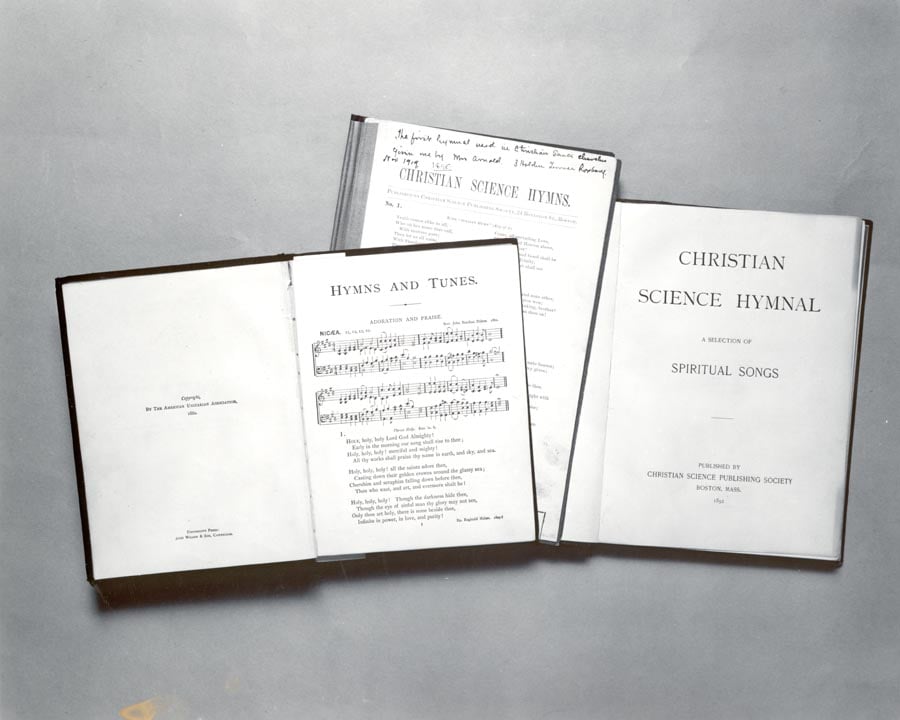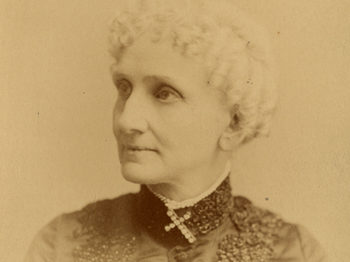Part 1
IN 1889 WHEN MARY BAKER EDDY dissolved the original Church of Christ, (Scientist), formed in 1879, she removed once for all the congregational control of her church. Cliques and dissensions in the early church had culminated in the revolt of 1888 when the records of the Christian Scientists Association of the Massachusetts Metaphysical College — virtually the records of the church — were seized by the revolting group. By dissolving the material organization of this church in 1889, Mrs. Eddy opened the way for Christian Scientists to remain together and to carry on their activities in Christian Science in accordance with spiritual law as they had been taught, without reliance on material organization and human regulations.
It was clear to Mrs. Eddy that God’s Church was not governed by wavering loyalties, and she set forth on her three-year search for an answer to the need for an impersonal, spiritually motivated instrument (organization) which would protect and carry her revelation of Christian Science to the world. Many legal authorities advised against building a church without a clear title resting on congregational ownership. She knew, however, that God must own the title to His Church and in 1892 after long and diligent search, a Massachusetts law was found which permitted an incorporated group of donees and their legitimate successors to hold title to beneficiary property for an institution. Mrs. Eddy had her God-given answer. She was ready to organize her church.
The First Church of Christ, Scientist, in Boston, was organized on September 23, 1892, at 133 Dartmouth Street, Boston, in a meeting attended by twelve loyal students of Christian Science, selected and guided by Mrs. Eddy in this momentous action. Based on the Massachusetts statute, they adopted a unique title guarantee of church property and plan of organization. With these essential safeguards, Mrs. Eddy applied herself to the founding of a church free of congregational control, and one which would “represent the church universal and reflect the church triumphant.” (Church Manual, The First Church of Christ, Scientist, 1895)
Four of the twelve members attending the meeting had previously been designated by Mrs. Eddy as the “Christian Science Board of Directors” and to them was conveyed the Deed of Trust upon which The Mother Church organization rests. (Church Manual, 1895, “Deed of Trust”) These four men were Ira O. Knapp, Joseph S. Eastaman, William B. Johnson, and Stephen A. Chase. The remaining eight were Dr. Ebenezer E. J. Foster-Eddy, Miss Julia S. Bartlett, Mrs. Mary W. Munroe, Mrs. Ellen L. Clarke (absent from the meeting), Mrs. Mary F. Eastaman, Mrs. Janet T. Colman, Mrs. Flavia S. Knapp, and Mrs. Eldora O. Gragg.
Twenty other loyal students, recommended by Mrs. Eddy, were also elected to membership in the Church at this meeting and these, together with the twelve organizing members, were designated “First Members” by Mrs. Eddy. These twenty included Calvin A. Frye, Edward P. Bates, Eugene H. Greene, David Anthony, Hanover P. Smith, Mrs. Josephine Curtis Otterson, Mrs. Grace A. Greene, Mrs. Caroline W. Frame, Mrs. Elizabeth P. Skinner, Mrs. Augusta E. Stetson, Mrs. Henrietta E. Chanfrau, Mrs. Emily M. Meader, Mrs. Berenice H. Goodall, Mrs. Annie V. C. Leavitt, Mrs. Laura E. Sargent, Mrs. Anna M. Otis, Mrs. Mary F. Berry, and Mrs. Martha E. S. Morgan, Mrs. Caroline S. Bates, and Mrs. Emilie B. Hulin.
Each First Member was given a copy of the “Church Tenets and Rules” a seven-page booklet containing the Tenets written by Mrs. Eddy, and the Rules for governing the Church. No regulations to govern the actions of individual Christian Scientists were included, Mrs. Eddy holding at this time that the Tenets would provide inspired spiritual perception which would lead to right action. The little booklet with minor changes in successive printings was the guide for the Church until 1895. Supplementary regulations were occasionally published in The Christian Science Journal.
The first Church Manual of The Mother Church was published in the early autumn of 1895. Nothing shows more clearly Mrs. Eddy’s obedience to God’s leading than her publication of this Manual, feeling as she had for so many years that laws of limitation for Christian Scientists would never be needed. (My. 229 :24 )
In this edition of the Manual First Members were designated as “persons who have proven themselves, in successive years, strict adherents to the doctrines and practise inculcated in Science and Health with Key to the Scriptures.” They shared with the Directors, also First Members, the government of the Church.

Part 2
IN THE EARLY YEARS of their existence, the First Members held regular business meetings quarterly, on Saturday before Communion Sunday, and often called special meetings. They passed on candidates for church membership, attended to the transaction of any church business that properly came before the meeting, fixed the salaries of the Readers, and discussed any important questions relative to church members. They could take any necessary disciplinary measures against members, including teachers. Candidates for church membership were elected by a majority vote of the First Members in attendance. Seven made up a quorum. The names of the newly elected members were read at the Communion service on the following day. By a rule in the Manual, First Members were not allowed to report what was said or done at a church meeting, nor the Directors to speak of discussions in their conference with the Pastor Emeritus.
In the early years of the Church the First Members numbered 40. This was increased to 50 in 1896 and thereafter to 100, with 40 a required minimum. New First Members were elected with great care, at first by a majority vote of the existing First Members. Later, in 1898, a Manual By-Law required them to be unanimously elected, with absentee Members directed to send a vote in writing. From 1899, any proposed First Member must be approved by the Pastor Emeritus and confirmed by unanimous vote of all First Members. In 1894, three First Members were elected; 5 in 1895; 2 in 1896; 6 in 1897; 8 in 1898; 2 in 1899; 33 in 1901; 4 in 1902; 5 in 1903; 1 in 1905 and 2 in 1906. Five Honorary First Members from England were elected in 1903, the only Members living outside a radius of 500 miles of Boston, a residential limitation for all other First Members, to facilitate attendance at meetings.
The quarterly meetings were discontinued in 1896 and from January 1897 First Members met semi-annually to 1901, corresponding to the times of Communion. Thereafter they met only once a year on Saturday preceding Communion Sunday in June. As these meetings became less frequent over the years, Mrs. Eddy more and more shifted responsibility for decisions to the Board of Directors. At her direction the government of the Church passed entirely to the Board of Directors in 1901. (Church Manual, 20th Ed., 1901) The church membership was ready for this move, and so were the Directors — so wisely had Mrs. Eddy wrought this transition.
The title of First Members was changed in 1903 to that of Executive Members, continuing as such until 1908 when the group voluntarily dissolved at the suggestion of Mrs. Eddy. Since 1898 all Readers had been drawn from this group.
With the dissolution of this body, then largely honorary, the organization of the Church was fulfilled.
Since 1892, this body of faithful Christian Scientists had served under Mrs. Eddy’s guidance as a valuable transition group, preparing the church membership as well as the Board of Directors for church government under the Manual. Simultaneously, the Church Manual had been brought to completion by Mrs. Eddy who, during these years, turned wholly to God to direct each needed change and addition leading up to the authoritative Seventy-third Edition with its final body of rules designed to stand for all time.1
In addition to their transitional services, the First Members protected the Church in its infant years, constituting the last fragment of human, congregational control, so essential in preparing the membership for the final form of church government. With the dissolution of this group, the Board of Directors under the Church Manual became the perpetual governing agent of The Mother Church as specified in the “Deed of Trust”, and were given full authority by the completed Church Manual.
Under Mrs. Eddy’s higher vision of Church during this period, 1892-1908, membership had steadily increased and become world-wide in extent. Mrs. Eddy had brought to mankind a Church which “represents the church universal and reflects the church triumphant.” (cf. Manual, 1895)
